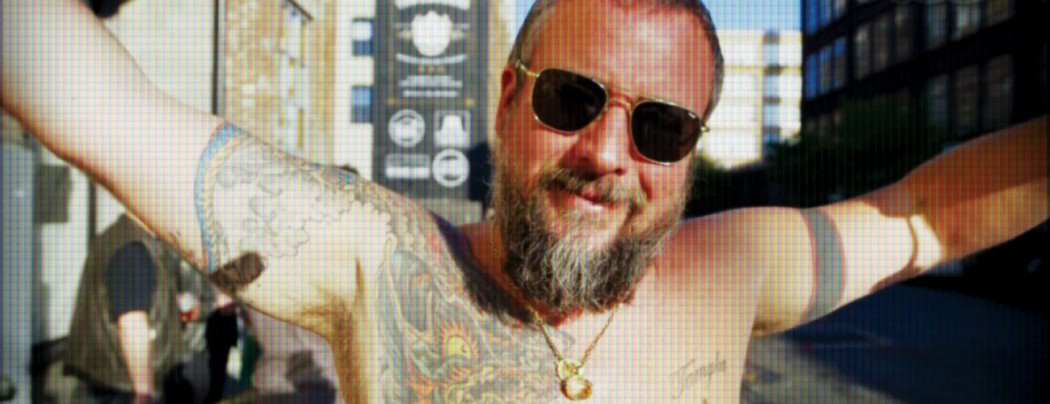Vice.com, the popular, online entertain-news platform, got our attention with its gritty, raw, “real” feel and its uncensored subject matter. We’re fans. Seeing the other side of the conflicts. Vices coverage in the Middle East has been especially important. Though, on the site you’ll find just as many videos like “Catching Up with Canadian Woman from Viral Threesome,” and “BattleBots Is All Sports Right, And It’s Amazing.”
In this piece from the Columbia Journalism Review we get an inside look at the Vice empire and its vast expansion plans. In a deal with A&E the cable channel paid $250 million for a 10 percent stake in Vice and will be airing programing on its traditional platforms. Vice is also under contract with HBO. These new develops beg the question: Will Vice maintain its street cred now that it’s in bed with these providers?
It’s not just their culture shows moving to TV. Vice is also increasingly throwing its weight behind hard news, and in late March, the company announced a deal with HBO that will expand its vaunted documentary series and give Vice a 30-minute newscast every weekday.
Vice rakes in money from the deals, and the prestige of making its mark on a traditional medium. A&E and HBO get to raise their profiles among Vice’s coveted millennial audience. Besides, it’s not the worst time to make a play for nightly news. NBC’s once-trusted heavy hitter, Brian Williams, was recently suspended, Al Jazeera America’s newsroom appears to be in tumult, and CNN seems to rack up on-air faux pas by the week.
Their fall coincides with Vice’s rise. Smith has long said he wants Vice to be “the next MTV, ESPN, and CNN rolled into one,” and in 2015, that has started to become a reality. Vice is no longer the edgy digital outsider, but a slick global empire lubricated with millions in investment and ad dollars that, coupled with a brash attitude, make the company a ray of light among the decaying temples of legacy journalism.
Vice’s attraction for its valuable millennial audience is predicated on the notion that it is real and raw, not plastic and prepackaged like the rest of the mainstream media world. But it may be truer to say that Vice simply packages itself more deftly than almost any other big media company.
“Vice has been very smart and strategic in how they position themselves and how they are reflected in the media,” said Eunice Shin, director of Manatt Digital Media, a consulting services and venture capital firm for media businesses. “And that’s all purposeful.”
Vice has mastered the mass production of authenticity for profit. But editorial standards change when your aim is not to be an entertainment company, but a trusted source of news.
Vice believes it is up to the challenge. Alex Miller, Vice’s global head of content, says the company has grown up. “With expansion comes a sense of responsibility,” he told me recently in one of Vice’s glass-walled conference rooms. “As time goes on I don’t think that being silly, being stupid, is cool anymore. When you look at the planet, at the state that it’s in, it demands attention. It demands scrutiny. And it demands a certain level of seriousness.”
We wonder if the culture will change too. Part of the cult of Vice seems to be this tough, masculine exterior. Those are traits that are harder and harder to come by in corporate America.
Rings with the Vice logo are worn around the office. New employees sign a non-traditional workplace agreement, acknowledging that, among other things, “sexually provocative and other explicit images, videos and audio recordings are regularly present in VICE’s offices.” And the company throws events like a charity ping pong match in March between senior editor Benjamin Shapiro and Rolling Stone’s Gus Wenner, and last December’s 20th anniversary party, where rapper Lil’ Wayne performed. The event was preceded by Smith personally handing out envelopes of $1,500 in cash to employees at the staff holiday party.
For young journalists, joining Vice seems to mean living a sensuous life and doing important work. While most new media gigs connote aggregation drudgery and hot takes, Vice staffers—average age 26 to 27—make longform documentaries, roam the globe, and largely eschew the clickbait content farm. As old media struggles to adapt to digital technology, Vice throws itself into experiments with Google Glass, debuts virtual reality news at Sundance, and launches new products such as Broadly, a soon-to-arrive vertical for women and a first for a brand built on laddish insouciance. Smith has made journalists optimistic, a rare feat in today’s gloomy media world. “As a young person, you have the chance to rise a bit higher and do things you can’t do waiting in line at a place with older, more experienced journalists,” a former employee told me.
TO UNDERSTAND the cultural shift underway at Vice, imagine that MTV’s Jackass, instead of fading into obscurity, now produces exclusive documentaries about ISIS from Syria and Iraq. Vice.com is still disproportionately preoccupied with sex workers—case in point: “Twenty Hours in a New York Strip Club”—but the crudest material has gradually been defanged.
Vice arrived at its current incarnation by a circuitous route. It emerged in 1994 as the Voice of Montreal, a countercultural magazine funded by Canadian welfare money that was brazen in generating hype. It published stories like “Gays or Girls?” in which two blindfolded men received oral sex from a man and woman and had to guess which was which, or the recurring “Gross Jar” feature, in which ingredients like facial scabs and a dead baby pigeon were mixed together, left for weeks, and documented. When the magazine was accused of lacking diversity, co-founder Gavin McInnes—who split from Smith and Suroosh Alvi in 2008 over “creative differences”—told Canadian media critic Jesse Brown that he wrote under black or female pseudonyms. It was caustic, unapologetically offensive and, to its audience, cool.
In 2006, Vice launched The Vice Guide to Travel and turned its attention towards online video. The company received an injection of private equity in 2009, then began to professionalize. Former Viacom chief Tom Freston became an advisor, and Vice got famed Hollywood talent agent Ari Emanuel to represent the company. CNN’s Fareed Zakaria and talk show host Bill Maher joined as producers on the HBO documentary series, along with BJ Levin, best known for producing reality TV shows like Project Runway, which put Vice on the cultural map.
Today, most of Vice’s content lives online under 10 websites, or “verticals,” encompassing everything from Fightland, about mixed martial arts, to Thump, on electronic dance music. While Vice started life as a hip magazine, it is now at heart a video operation, and its best content, across all its verticals, are mini-documentaries that are also hosted on YouTube. Its flagship, however, is not a website, but Vice’s half hour-long HBO documentary series, originally conceived as “60 Minutesmeets Jackass.”
Vice News, another vertical that launched last March, has scooped up Webbys, Peabodys, and a National Magazine Award, while scoring interviews with President Barack Obama, Vice-President Joe Biden, and James Mitchell, the so-called “architect” of the CIA’s interrogation program. With the HBO newscast, hard news will soon consume even more of the company’s resources.
Check out the whole story here
Don’t forget to sign up for the newsletter to get the inside scoop!
Follow us on Instagram, twitter and Facebook to join the revolution!






